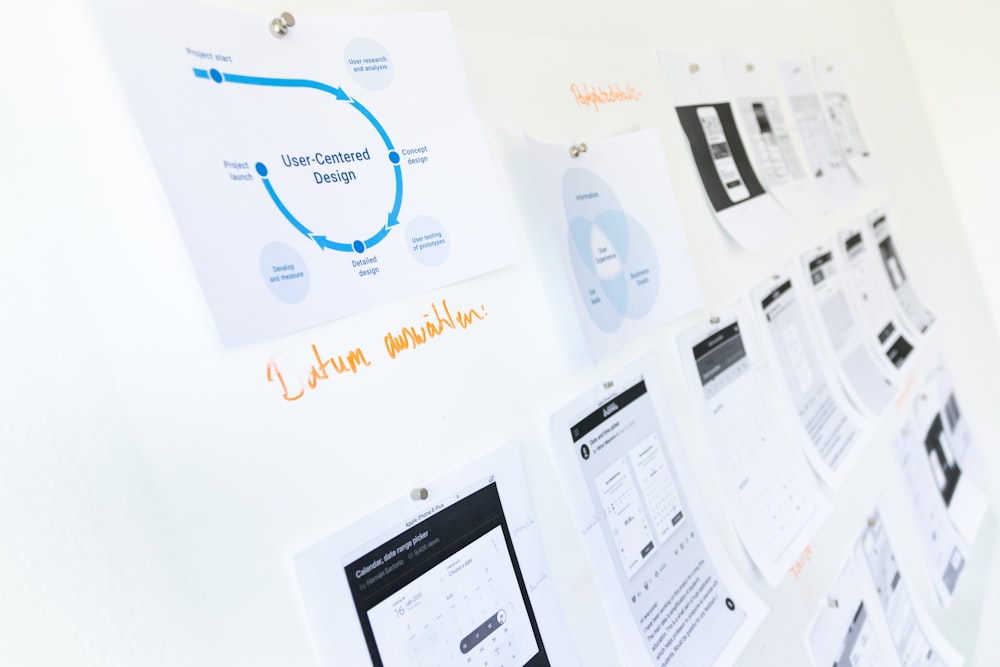Welcome to the post-text future, a world where visuals are the common language. Movies, Netflix, social media, selfies — this is the visual era, where what we are is what we see. Research shows that 65 percent of us are visual learners, indicating that diagrams, graphs, and images influence learning outcomes more than the written word. It’s no wonder, then, that business analysts, product managers, and other professionals are incorporating more visual models in their day-to-day.
Visual models, in particular, have transformed the business landscape. These graphic representations of systems and objects communicate information and ideas using graphical languages. Requirements modeling language (RML) is a simple and effective language for communicating business information and system relationships through visual models.
Visual models provide us with an unprecedented amount of context and focus, and more of us are using models for virtual meetings, especially right now as most people work from home.
Key values of models

In a business environment, visual models serve various purposes, but they all share certain key values.
Find missing context
Visual models provide us with the information we need to identify gaps and missing information. The organization and structure of visual models reduce the complexities of product management, so we can make smarter, more informed decisions that fulfill business outcomes.
Organization
Visual models make it easy to organize large, complicated sets of information. This can expedite the product development lifecycle and achieve more successful results.
Research shows that 40 percent of us respond better to visual information than text alone. Models in particular, let us visualize outcomes in our minds, making them advantageous for business analysis. We can define the needs of customers and recommend solutions as early as the brainstorming stage and continue to benefit from models right up to product launch.
Focus on subsets
Visual models let us visualize the big picture (the long-term outcomes of product design and development), as well as the finer details. With models, we can focus on subsets of information and identity patterns in our requirements, ideas, and business processes.
Refine information
Visual models aren’t just a snapshot of a particular time period in the product development lifecycle. We can use them to refine information throughout the journey to product launch. Models can change and adapt as we evolve through different stages of product management.
Optimize the requirements process
Visual models optimize the requirements process for various business-related tasks by empowering product managers to refine and vette ideas early. With visual models like ecosystem maps, process flows, and business data diagrams, product managers can enhance requirements by exposing assumptions and misalignment. When product managers refine ideas during the modeling phase, they minimize time lost making corrections to requirements that grow less mutable as the project matures.
Some people think that preparing visual models for requirements means extra work, but this isn’t the case. Using the right models provides long-term investment by making the requirements process much faster.
Optimize the validation process
Visual models are also beneficial to the requirements validation process. Using the visual models to focus attention on a subset of information, and ensuring the requirements are correct for that subset of information, makes the validation process more efficient.
The benefits of models for virtual meetings

The business landscape has transformed over the last few years. With more people working remotely — 43 percent of Americans work from home at least occasionally, according to the most recent statistics — many meetings now take place online instead of in the boardroom, especially during the current pandemic. Even in a physical office location, virtual meetings help organizations stay in touch, wherever they are in the world.
Visual models help product managers and business analysts communicate complicated information in virtual meetings. Even a simple process flow diagram can provide someone with the context and clarity they need. Visuals are an alternative form of communication to lengthy pitch decks and big blocks of text. For example feature trees, process flows, and decision trees can be used to engage people in a virtual meeting — and make sure everyone is paying attention!
Here are some ideas for using models in virtual meetings:
- Use different models to illustrate different concepts in product development. For example, a system flow diagram to explain the activities and decisions systems execute.
- Use models to encourage participation and engage participants.
- Choose the right models to display at the right time during meetings.
- Only model the most useful information. Otherwise, you could confuse your participants.
- Once meetings are over, upload models to your intranet or website so participants can look over them in their free time.
Effective use of visual models in a virtual space
Correctly executed visual models are an essential tool for the elicitation and documentation of software requirements. All too often, business analysts and product managers choose not to utilize this strategy due to unfamiliarity with its virtual applications. This is a missed opportunity with potentially far-reaching impacts. When working with a dispersed team, visual models are invaluable to establishing and maintaining clear, collaborative requirements management in a virtual environment. The loss of physical proximity can be mitigated by using visual models to promote visibility into process, requirements, assumptions, and potential misalignment.
With the right resources and training, developing the ability to align visual models with virtual communication is highly achievable. Our Austin-based requirements and business analysis services will show you how to use visual models to manage software requirements in a virtual space.
Final word
Visual models optimize product development, making them a great tool for team organization, requirements validation, and maintenance of best business practices. Using models for virtual meetings is an excellent way to communicate information with team members around the world, or those who are working from home due to the current crisis.
Ready to incorporate visual models into your virtual meetings? Here at ArgonDigital, we have all the resources and training modules you need. With more than 20 years of experience, we work to deliver 10x more value to Fortune 1,000 companies. We can do the same for you. Click here to speak with us.




